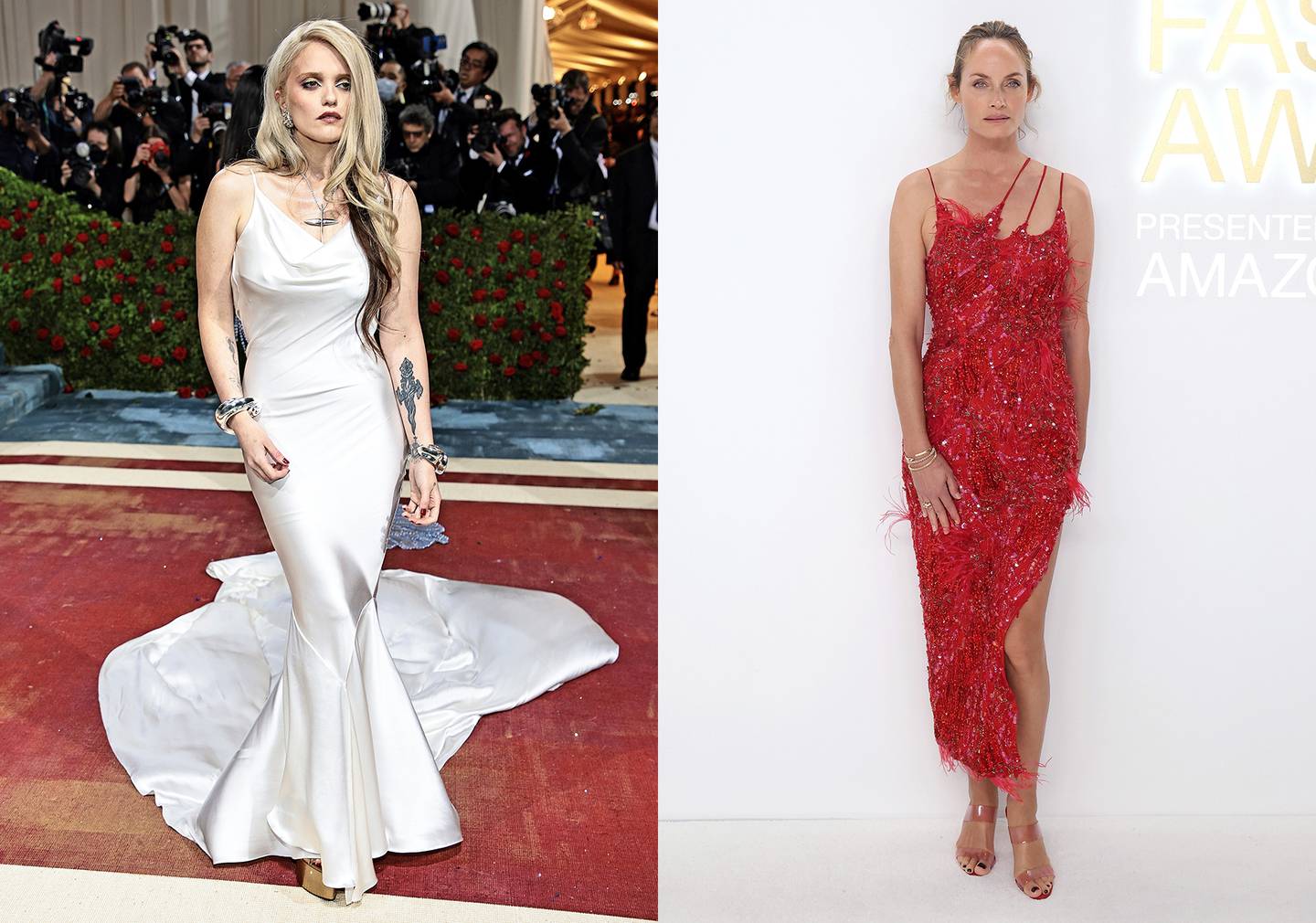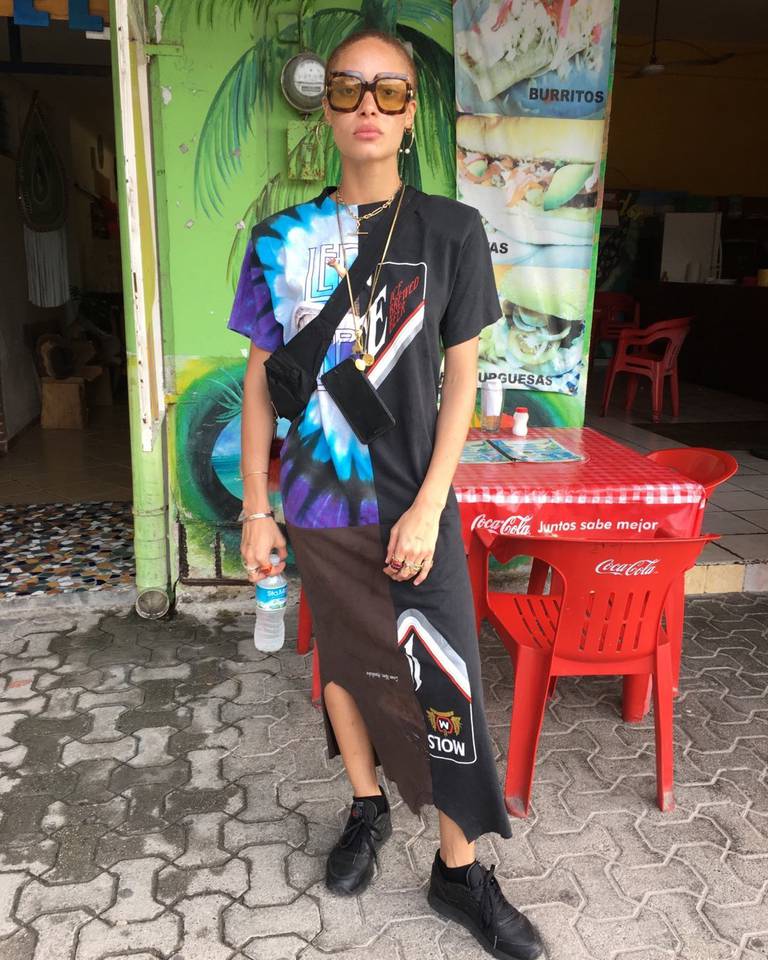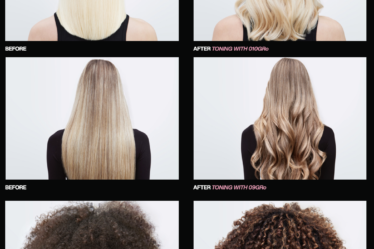
Conner Ives has taken a full year to follow-up his debut London show.
It’s an unusually long time for a buzzy young talent to wait to drop new products in today’s newness-craving industry. But it takes time to source the deadstock fabrics and vintage garments that comprise the majority of materials used in his designs, and Ives — an American expat that’s made London his home — has been thinking carefully about how to grow his business in a fashion system that seemingly runs on steroids.
“I would much rather do an incredible show that affects people deeply, rather than doing two mediocre shows and getting on this treadmill that just goes faster and faster,” Ives said in an interview at his South Tottenham apartment (housed in the same building as his studio) ahead of his second London Fashion Week show.
The 26-year-old Bedford, New York native was a student when he first caught the eye of A-listers and industry veterans with his Americana-inflected garments made from spliced up vintage tees, silk scarves and piano shawls. He quickly began working on red carpet projects, before landing a gig working at Rihanna’s now-shuttered Fenty label and making the cut as an LVMH-prize finalist.
Since launching his label in 2021, he’s nabbed Net-a-Porter, Selfridges and Matches as stockists, and counts Hailey Bieber, Keke Palmer and Amber Valetta as fans. Following his debut show last February, his designs have popped up everywhere from the Met Gala red carpet to the pages of Vogue.
Now, with his second show, Ives is focused on how he can take his fledgling label to the next level, a goal that isn’t easily achieved given most of his clothes are made from repurposed materials, which can take months to source in the correct colours and quantities. His challenge: figuring out how to scale his brand of “slow fashion,” juggling sustainable ideals with the commercial demands of the fashion system.
“I’m really trying to restructure how we make clothes,” he said. “I do have quite lofty goals for the business. I want to do something new. I want to create an American lifestyle brand that is responsible.”
Ives hit multiple career milestones most designers dream of before he’d even graduated design school. He dressed Adwoa Aboah for the Met Gala in May 2017; was hired by Rihanna (“Truly the best boss I’ve ever had” — and still mentor, Ives said); and landed a capsule collection of his signature reconstituted T-shirt dresses on the shop floor of London-boutique Browns.
By the time graduation rolled around, he felt ready to start his own label, which launched in 2021. “I had a bit of press to go off of, I had a bit of a name, I could capitalise on this,” he said.
Underpinning Ives’ aesthetic is his American heritage, with collections featuring archetypes in American pop culture: from ‘The Stay-At-Home Mom’ to Jackie O. and ‘The Vogue Girl,’ inspired by wide-eyed assistant Andy Sachs from The Devil Wears Prada. This season’s cast of characters include a bartender straight out of the 2000 film Coyote Ugly; a Real Housewife; and an all-American pop star (think Britney Spears circa 2001).
“I don’t think I ever considered my Americanness until I got to London,” the Central Saint Martins alumnus said. “In this city, in this sphere that I was in, I realized that my American upbringing was a really unique experience, [yet] American pop culture was digested the world over, everyone knew the references I was trying to plug into.”

Bart Ramakers, founder of agency Parrot, which works with Ives on brand sales and business strategy, says he was instantly drawn to the designer’s American perspective coming out of a city like London when he first came across Ives during his second year at Central Saint Martins.
“There’s something about how he puts different prints and colours together and the placement of pieces, even when he cuts up different scarfs and he makes a pattern out of it for a blouse or a dress,” he said. “I love how there’s that colour sensitivity, which to me has a very high level of sophistication, but there’s definitely a very feminine sexy side of his work as well.”
Ives is part of a movement of next-generation designers trying to build sustainable, values-driven fashion businesses by embedding principles like circular production into their brands from the start. Amid a climate crisis and a heavily polluting fashion industry, young designers are more conscious than ever about ensuring the clothes they make are as responsible as they can be.
Others like Marine Serre, Bode, Priya Ahluwalia and Bethany Williams are also seeking to eschew mass production and minimise the use of virgin materials. For Ives, about 75 percent of his collections are pieces made from second-hand clothing, deadstock and vintage materials, the designer said.
But it’s challenging to operate and grow a label that relies so heavily on second-hand materials. Sourcing and repurposing the fabrics takes time and manpower, and limits how many of each item can be produced. Ives’ business is still operating at a very small scale, but last season requests from retailers already surpassed what the brand was able to fulfil, Ives said. Meanwhile, achieving profitability in the traditional wholesale system often requires young creatives to quickly ramp up order volumes, as well as showing buyers new styles regularly.
“Sourcing all of those T-shirts, or scarves or pianos shawls — all of that is a lot of work. In that sense, scalability is harder,” said Ramakers. “So we’re looking at: how can we be creative with that, to build a sustainable business…there’s other ways than the classic retail model.”
Ives is the first to say he doesn’t have all the answers. But the American entrepreneur inside him is determined to figure out how to make it work, he says.

Currently, collections are a mix of what Ives dubs “demi-couture” — high-priced, more time-intensive pieces that are extremely limited or one-of-a-kind — and more commercial ready-to-wear, including pieces made from recycled fabrics and simpler-to-produce upcycled styles like his spliced T-shirt dresses. (Last year, the brand produced over 1,200 of the T-shirt dresses, which retail for about £450, using local London factories).
With his latest collection, Ives has opted to include more of the recycled fabric-pieces, which can be produced in a more standardised, scalable way. His Friday show will debut shirting made from Tencel, an eco-friendly fabric made from processed trees, evening dresses rendered in recycled polyamide and oversized faux fur coats made using recycled wool.
This year the designer plans to release two collections, but still stick to just one runway. “That at least feeds the hunger of the bigger retailers that need to keep a consistent flow of new products,” he said. “You have a lot of pressure on your back from buyers, press, people that work within a system that gives them an output every three to four months.”
Collaborations, like a footwear tie-up with accessories brand Wandler set to debut at the show, are another opportunity the designer is exploring.
Operating a small designer business isn’t easy, even without the added challenges of Ives’ more-sustainable model. But many industry figures are rooting for him to succeed, including buyers at Net-a-Porter who selected Ives for its “Vanguard” incubator programme.
“His creative inclusion of upcycled fabrics, mixed with his incredible use of print and colour, is exactly what we look for in an emerging designer,” said Net-a-Porter market director Libby Page, adding that his dresses are in high demand.
“Conner is a designer that I think has an incredibly bright future,” said celebrity stylist Danyul Brown, pointing to Ives’ ability to leverage vintage materials while keeping his looks modern. “I consider him one of the industry’s most relevant and talented.”



